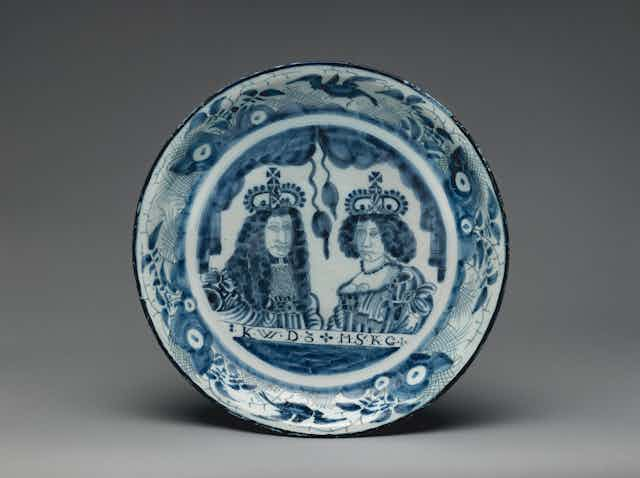Mugs and plates celebrating the coronations, marriages and deaths of British royalty are not unusual sights in the Australian home. With the forthcoming coronation of King Charles III on May 6, such memorabilia cluttering our cupboards are only likely to increase.
Guides to “the best King Charles III memorabilia” are already advising what souvenirs to buy, including commemorative coins, biscuit tins, tea towels, plates and, of course, mugs.
Yet the royal souvenir is not a recent invention.
History of the royal mug
The tradition of celebrating royal events with a mug or drinking vessel dates to at least the 17th century when the current king’s ancestor and namesake, Charles II, was restored to the English throne in 1660-1.
Several mugs and cups produced at the time have survived and depict the “merry monarch”.
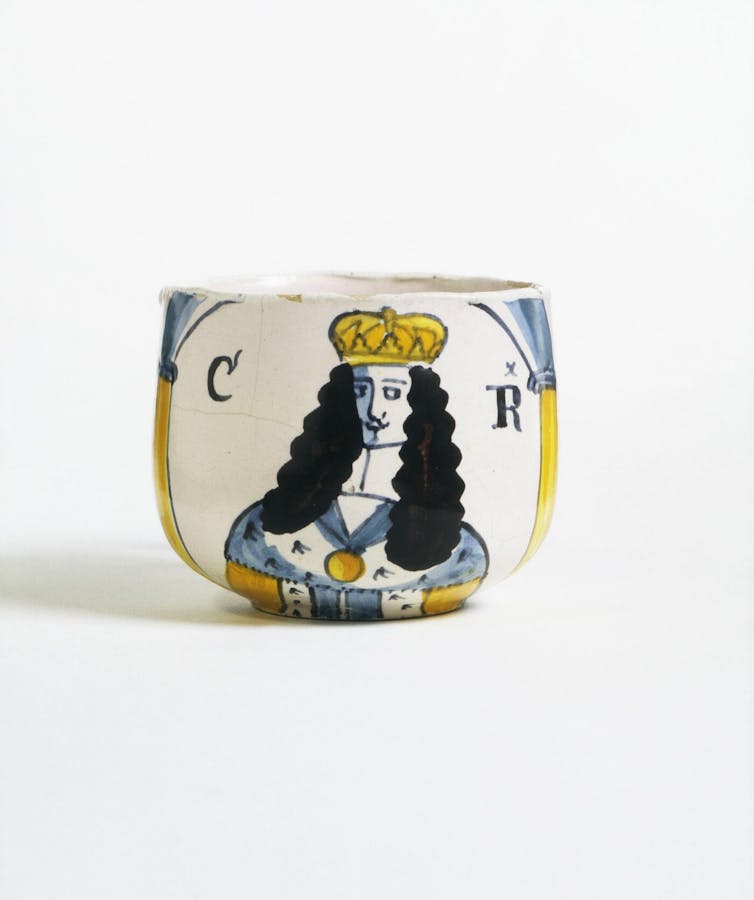
The restoration of Charles II (after his father Charles I had been executed by order of parliament in 1649) was greeted with rejoicing throughout England, Scotland and Ireland.
The famous social climber and diarist Samuel Pepys embodied the general feeling of this time when he wrote that on the day of Charles II’s coronation he watched the royal procession with wine and cake and all were “very merry” and pleased at what they saw.
Read more: Beheaded and exiled: the two previous King Charleses bookended the abolition of the monarchy
Drinking and eating in celebration may account for why mugs and plates were, and remain, such popular forms of royal memorabilia; they were used to drink loyal toasts of good health to the monarch on special days of celebration.
While a strong ale was the preferred liquid for 17th-century toasts, as the British Empire expanded tea drinking became a common pastime. Teacups became popular royal souvenirs during the reign of Queen Victoria in the 19th century.

Fostering support
The earthenware mugs made for Charles II’s coronation were relatively inexpensive, but not produced on a mass scale.
With the industrial revolution of the 19th century and the rise of souvenir culture, royal memorabilia in all forms became more popular and widespread.
Since 1900, royal births, deaths, marriages and coronations have been big money for manufacturers of royal memorabilia.

The pitfalls of mass production were realised in 1936 when Edward VIII abdicated from the throne just months before his planned coronation in May 1937. Manufacturers were stuck with thousands of mugs, plates and other items celebrating the coronation of a king that would not happen.
Many of these mugs still made their way out to the market, while other manufacturers such as Royal Doulton adapted existing designs and used them for the coronation of his brother, George VI.
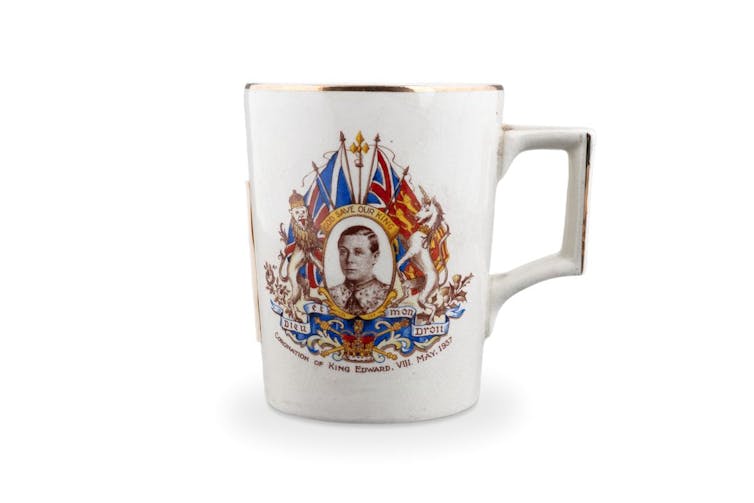
English monarchs were not the only royals to encourage the use of their image on objects collected, worn or used by their subjects.
Renaissance Italian princes popularised the portrait medal and the Holy Roman Emperor and King of Spain, Charles V, fostered support in his vast territories using mass-produced medallions bearing his image.

Objects with images of royalty served similar functions in the 20th century. Australian school children were often given medals to commemorate coronations, while children in England were gifted pottery mugs to drink to the sovereign’s health.
When Elizabeth II was crowned in 1953, English children received mugs, tins of chocolate and a spoon or coin.
Measuring popularity
Royal memorabilia don’t just foster support but act as a barometer of the popularity of the royal family around the globe.
Coronation mugs became popular in the reign of Charles II in 1661 because these objects captured the joyous feeling of a nation that had endured 20 years of warfare and political chaos.
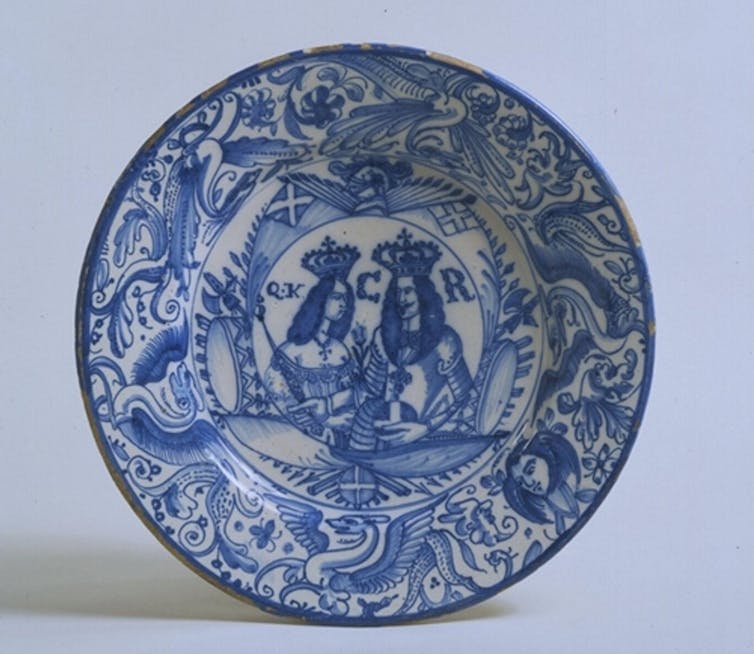
Support for the royal family has often been shown through royal weddings and marriages: plates depicting Charles II and his Portuguese bride, Catherine of Braganza, were made to celebrate their union in 1662.
Recently a gold pendant inscribed with the initials of Henry VIII and his first wife, Catherine of Aragon, likely worn by a supporter, was also discovered.

For Prince William and Kate Middleton’s highly anticipated wedding in 2011, thousands of types of mundane and wacky souvenirs were produced, such as plates, mugs, magnets, graphic novels, toilet seat covers and PEZ dispensers.
Over 1,600 lines of official merchandise were produced for the marriage of Princes Charles to Lady Diana Spencer in 1981. Less than 25 lines were produced for Charles’ unpopular second marriage to Camilla Parker Bowles in 2005.
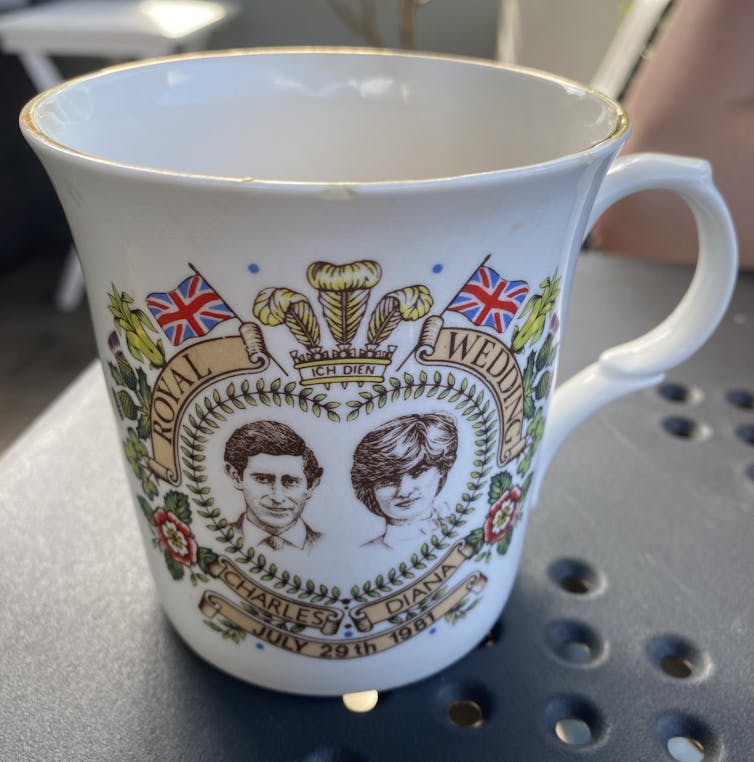
While Charles may not be as popular as his mother, coronation fever has most definitely taken hold in the United Kingdom. Royal fans are set to spend £1.4 billion (A$2.6 billion) on coronation parties and souvenirs.
The availability of coronation souvenirs and party supplies in Australia is somewhat more limited – perhaps an indicator of Australia’s diminishing appetite for the royal family amid increased calls for another vote on a republic.
Read more: What King Charles III's coronation quiche tells us about the history of British dining

